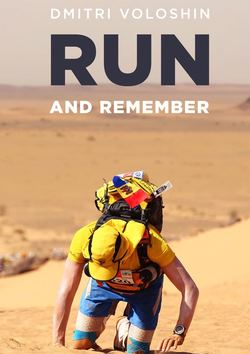Читать книгу Run and remember - Дмитрий Волошин, Dmitri Voloshin - Страница 3
Marathon Des Sables
ОглавлениеWhen you begin running, you never know where this “bad” habit will lead you. You cannot even imagine it.
Four years ago, after my first training where I heroically ran two kilometers, I felt like a typical white-collar worker: fat, breathless, and mad, with pain in my knees. My greatest sports achievement at that time was a descent from a water slide in Turkey. If anyone had told me back then that only four years later I would go to the Sahara Desert and run 250 kilometers on the sand with a full backpack, I wouldn’t have believed it!
But time goes by, your first training is followed by the second, the tenth one… Then you run five, ten kilometers, a half marathon3, a marathon4], “Half Ironman”5, “Ironman”, “Comrades”6, “Otillo”7, “Rubicon”8. This unfinished list is familiar to many racing lovers. And when you see an ellipsis at the end of the list, you understand that you were right four years ago. Because the list continues with the Great and Terrible…
Marathon des Sables (MDS, Marathon of Sands). It is a 250-kilometer, six-day ultramarathon through the Sahara Desert. The MDS is considered one of the world’s toughest endurance contests.
That is why it attracts the attention of hundreds of madmen every year.
Marathon des Sables was invented by the French concert promoter Patrick Bauer. In 1984, he traversed the Sahara Desert alone, covering 350 kilometers in twelve days.
The first official launch of the Marathon des Sables took place in 1986 in Morocco. Then, just twenty-three participants finished the race. In 2017, about 1,300 people toed the starting line, provided that there are quotas for different countries. Moldova is participating in this outrage for the first time, and it seems to me that our quota will not be exhausted soon. Here are just some of the joys awaiting the participants of this adventure:
– The air temperature reaches +50°C in the daytime and drops to +5°C at night;
– Strong winds blow and sand storms may arise in the desert;
– Participants must carry all personal items and food with them in a backpack that weighs about 12—13 kilograms;
– The race passes through sand dunes and stony terrain with long, rocky climbs and descents;
– During the day one participant is given only 12 liters of water;
– Almost all runners’ feet bleed because of the heat, sweat, and sand.
Isn’t it lovely?
How can you not want ALL THESE JOYS?
Many people believe that only superhumans or suicidals, as well as those who don’t have enough thrills in their lives run the Sahara marathon. I believe that it’s first of all a challenge to your idea of normality. If you think the goal is unattainable, you’re not likely to achieve it. If you believe in yourself, then crawl. Being a superhuman has nothing to do with it.
However, for me, until I experienced the MDS, all that was just theoretical. For me, it had to be proven.
The Italian Mauro Prosperi knows better than anyone how hard this race is. In 1994, he got lost because of a sandstorm and was found in Algeria nine days later. He lost 13 kilograms but survived thanks to an unusual diet that included dead bats!
3
a distance of 21.0975 km
4
a distance of 42.195 km
5
one of a series of short-distance triathlon races consisting of a 1.2-mile (1.9 km) swim, 56-mile (90 km) bike ride, and 13.1-mile (21.1 km) run.
6
the oldest and most popular track and field race in the world for super-marathon distance. The 90 km long distance courses through the KwaZulu-Natal Province of South Africa
7
one of the most famous swimruns
8
the unique ultramarathon relay taking place in Moldova and crossing the whole country
